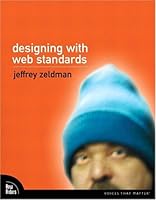 Image via Wikipedia I’ve been rediscovering the joy of Greasemonkey scripts lately. For those who don’t know, Greasemonkey is one of the best extensions for Firefox ever made (the other being Zemanta of course:) that allows you to run JavaScripts on specified pages. This doesn’t really mean much to the non-technical crowd, but to us geeks this means you can do almost whatever you want with the page. As I make more and more of these I decided to share them here.
Image via Wikipedia I’ve been rediscovering the joy of Greasemonkey scripts lately. For those who don’t know, Greasemonkey is one of the best extensions for Firefox ever made (the other being Zemanta of course:) that allows you to run JavaScripts on specified pages. This doesn’t really mean much to the non-technical crowd, but to us geeks this means you can do almost whatever you want with the page. As I make more and more of these I decided to share them here.
For my Slovenian readers
- Finance unfixed is a script that will unfix the header of finance.si. This means the header will scroll and you’ll get more space to read the article.
- RTVSlo OI is a script that will remove the header from the OI page on rtvslo.si again leaving you with more real estate for reading.
- Delo is a script that will help your eyes when reading delo.si news site since it’s small default line-height might make them hurt.
Developers
- JSLint highlighter will help you read the JSLint results. If you write JavaScript and don’t know what JSLint is you should go check!
How to work it
Well first you have to have Greasemonkey installed. After that installing a user script should be as simple as a click of a link. When a script activates you’ll see a little green box that will say ‘Greased’ in the top right corner. Clicking it will toggle the script – either it’s on and active (green) or off and the page looks as it would in the first place (red). You can also toggle the script with alt+g.
Related articles by Zemanta
- Make Google Reader Widescreen-Friendly [Featured Greasemonkey User Script]
- Get More Work Space with Writing Room 4 Google Documents [Featured Greasemonkey User Script]
- Play Chickenfoot With the DOMinoes of the Web
- Roll your own Firefox scripts with Chickenfoot
- iGoogle Header Remover Improves Screen Real Estate [Featured Greasemonkey User Script]
- Get Download Links to High Quality YouTube Vids [Featured Greasemonkey User Script]
![Reblog this post [with Zemanta]](http://img.zemanta.com/reblog_c.png?x-id=55ad7c1c-ac13-4b05-a456-b330738d63cd)

![Reblog this post [with Zemanta]](http://img.zemanta.com/reblog_c.png?x-id=86ed5c9b-b1a4-4c4f-ad28-133c1d417097)



